Introduction
The Mid-Autumn Festival, a cherished tradition in East Asian cultures, is synonymous with lantern-lit skies, family reunions, and the ubiquitous mooncake—a pastry embodying centuries of culinary artistry. Among the myriad varieties of mooncakes, the Ba Zhen (八珍) mooncake stands out as a testament to opulence and craftsmanship. Translating to “Eight Treasures,” this delicate confection encapsulates a harmonious blend of ingredients, each chosen for its flavor, texture, and symbolic significance. This article delves into the origins, composition, and cultural resonance of Ba Zhen mooncakes, unraveling the mystery behind their eight prized components.
A Brief History of Mooncakes
Mooncakes have been integral to Mid-Autumn Festival celebrations for over a millennium, with roots tracing back to the Tang Dynasty (618–907 CE). Originally offered as tributes to the moon, these pastries evolved into symbols of unity and prosperity. Traditional mooncakes, characterized by their thick, golden crusts and dense fillings, vary regionally, with flavors ranging from sweet lotus seed paste to savory salted egg yolks. The Ba Zhen mooncake, however, represents a pinnacle of gastronomic refinement, combining eight meticulously selected ingredients to create a multifaceted sensory experience.
Decoding the Eight Treasures
The term Ba Zhen (“Eight Treasures”) reflects both the ingredients’ rarity and their collective ability to harmonize flavors. While regional variations exist, the classic Ba Zhen mooncake typically includes the following eight components:
-
Lotus Seed Paste (莲蓉, Lián Róng):
The foundation of many mooncakes, lotus seed paste is made by simmering dried lotus seeds until tender, then puréeing them into a smooth, silky paste. Sweetened with sugar or honey, it offers a delicate floral sweetness that balances richer ingredients.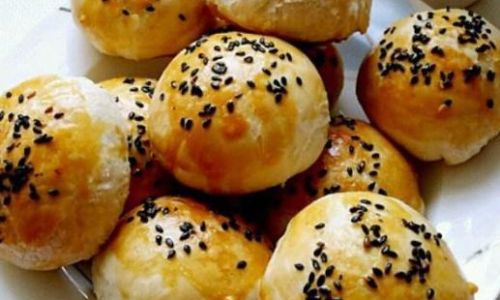
-
Melon Seeds (瓜子, Guā Zǐ):
Roasted and salted melon seeds, often from pumpkins or watermelons, contribute a satisfying crunch and subtle nutty flavor. Their inclusion adds texture contrast to the soft filling. -
Walnuts (核桃, Hé Táo):
Rich in omega-3 fatty acids, walnuts are prized for their buttery texture and earthy undertones. Toasted to enhance their aroma, they provide a hearty bite. -
Almonds (杏仁, Xìng Rén):
Sweet almonds, either blanched or left with their skins, introduce a mild, almost floral sweetness. Their firmness complements the softer elements of the filling. -
Dried Longan (龙眼干, Lóng Yǎn Gān):
These sun-dried tropical fruits, native to Southern China, impart a caramel-like sweetness and chewy texture. Longan is also believed to symbolize family unity in folk traditions.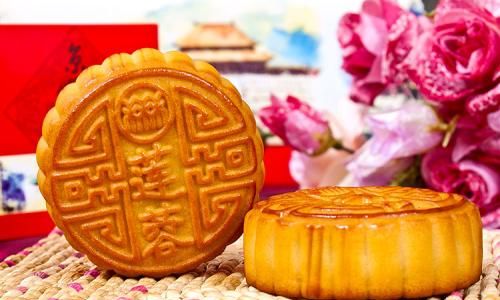
-
Goji Berries (枸杞, Gǒu Qǐ):
Known for their vibrant red hue and tart-sweet flavor, goji berries add a pop of color and a hint of tartness. Revered in traditional medicine for their antioxidant properties, they bridge culinary and wellness traditions. -
Rose Petals (玫瑰花瓣, Méi Guī Huā Bàn):
Candied or preserved rose petals lend a floral fragrance and delicate sweetness. Their inclusion elevates the mooncake’s aroma, evoking images of spring gardens. -
Chinese Wolfberry (枸杞子, Gǒu Qǐ Zǐ):
Often confused with goji berries, wolfberries are smaller and slightly tangier. They contribute a tangy-sweet note and are valued for their purported health benefits, including vision support.
The Art of Craftsmanship
Creating a Ba Zhen mooncake is a labor of love, requiring precision and patience. Artisans begin by preparing the lotus seed paste, which serves as the base. Each of the eight treasures is meticulously measured and mixed into the paste, ensuring even distribution. The dough, typically made from golden syrup, lye water, and flour, is rolled into thin sheets to encapsulate the filling. After shaping, the mooncakes are baked at low temperatures to achieve a golden, flaky crust. Some bakers apply an egg wash mid-bake to achieve a lustrous finish, while others etch traditional motifs into the surface as a nod to heritage.
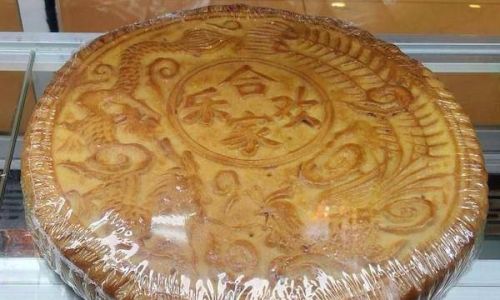
Cultural Symbolism
Beyond their gustatory appeal, Ba Zhen mooncakes carry profound cultural symbolism. The number eight, considered auspicious in Chinese numerology, represents prosperity and completeness. Each ingredient is selected for its symbolic resonance: lotus seeds symbolize purity and harmony, while longan evokes familial bonds. Goji berries and wolfberries, with their medicinal associations, reflect holistic well-being. Together, these elements transform the mooncake into a edible prayer for health, wealth, and togetherness.
Regional Variations
While the classic Ba Zhen mooncake adheres to the eight-treasure formula, regional adaptations showcase local ingredients. In Cantonese-style mooncakes, dried tangerine peel might replace rose petals, adding a citrusy zing. Taiwanese variations sometimes incorporate pine nuts or dried mango, while Northern Chinese bakers may use jujube paste as a binder. Despite these variations, the essence of Ba Zhen—harmony through diversity—remains constant.
Modern Interpretations
Contemporary chefs have embraced the Ba Zhen concept, infusing it with innovative twists. Vegan versions substitute honey with agave syrup, while gluten-free crusts cater to dietary restrictions. Some bakeries experiment with exotic ingredients like matcha powder, durian, or even truffle oil, appealing to younger, adventurous palates. However, purists argue that such modifications dilute the tradition’s essence, sparking debates about preserving culinary heritage versus embracing progress.
Health Considerations
Traditional Ba Zhen mooncakes, while delectable, are calorie-dense due to their sugar and nut content. A single mooncake can exceed 700 calories, prompting health-conscious consumers to seek lighter alternatives. Low-sugar recipes, which use natural sweeteners like erythritol or monk fruit, have gained popularity. Additionally, the inclusion of nuts and dried fruits provides dietary fiber and healthy fats, offering a nutritional upside when consumed in moderation.
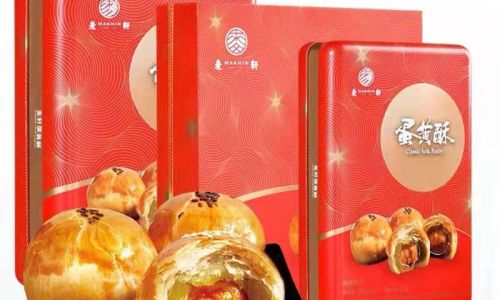
The Ritual of Consumption
Sharing Ba Zhen mooncakes during the Mid-Autumn Festival is a ritual steeped in tradition. Families gather to slice the mooncake into wedges, each person receiving a portion symbolizing unity. The act of savoring the eight treasures together fosters connection, with each bite offering a conversation starter—the crunch of walnuts, the floral whisper of rose petals, the chew of longan. This communal experience transcends mere sustenance, embodying the festival’s spirit of gratitude and togetherness.
Preserving a Legacy
In an era of mass production, artisanal Ba Zhen mooncakes face competition from factory-made alternatives. However, small-batch bakers persist, upholding time-honored techniques. Workshops teaching mooncake-making to younger generations ensure that the craft survives. Online platforms and food tourism further amplify the allure of Ba Zhen mooncakes, introducing global audiences to their intricate flavors.
Conclusion
The Ba Zhen mooncake is more than a pastry; it is a microcosm of Chinese culinary philosophy, where balance, symbolism, and craftsmanship converge. Each of its eight treasures tells a story—of nature’s bounty, cultural heritage, and the enduring human desire to celebrate life’s simplest joys. As the Mid-Autumn Festival moon glows brightly, the Ba Zhen mooncake remains a beacon of tradition, inviting generations to partake in a legacy as timeless as the festival itself. Whether enjoyed in its classic form or reimagined for modern tastes, this eight-treasure masterpiece continues to enchant, one bite at a time.
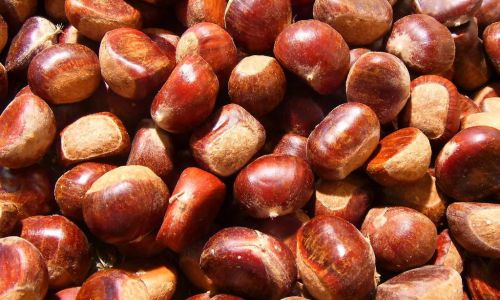
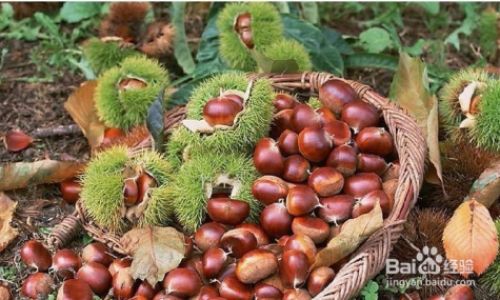
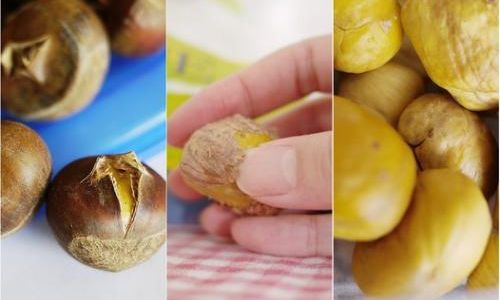
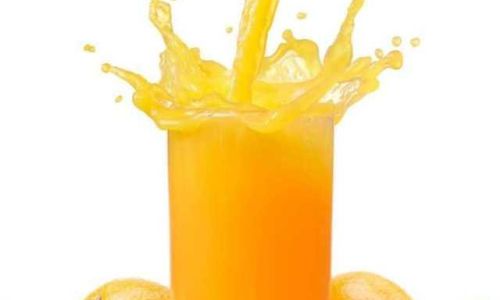
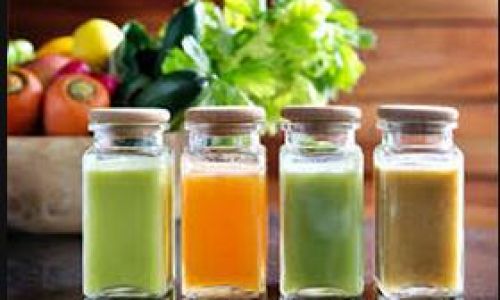
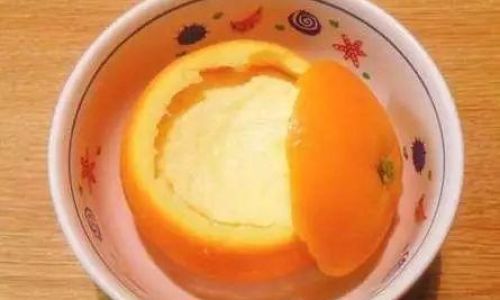
0 comments